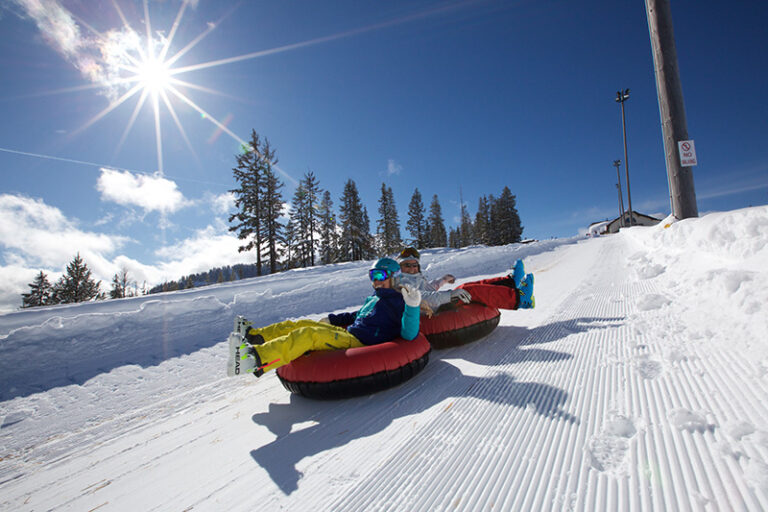Since 2009 it has been legal to harvest the rainwater from your roof throughout Washington State, so long as it is collected from an existing roof and used solely to water your property (not for drinking). If you are going to grow anything in your garden, collecting rainwater is a good option because it’s free and non-chlorinated.
If you plan to water a garden solely off of rainwater, you’ll probably need a lot more than a 55-gallon rain barrel. A decent starting point, especially if you use drip irrigation and mulch your garden, is more like 500 gallons, but even that will likely run out in the dry months of an Inland Northwest summer.
I picked up a 275 gallon, food grade, “caged” IBC Tote from Eagle Peak Containers, and sourced another one from Bumble Bar. Depending on the tote’s drain valve thread style, you may have to special order a garden hose adapter instead of assembling your own from PVC pieces procured from a local store. And really, ordering all your connection components online will save you a lot of time and effort compared to tracking down each and every part in person. Another option is to search online for a rain barrel component kit.
With all this effort you’re going to want as much water storage capacity as possible. So if anything, go overboard on cistern size. When it comes to irrigation, there is really no such thing as too big of a tank, only too small. For instance, 55 gallons is about how much a single 4 by 8-foot raised bed will consume per watering session. Unless you are hand watering a small container garden, or you daisy chain a bunch together, those rain barrels are not practical in the Spokane area’s hot summers.
For the serious water harvester with the space, Home Depot stocks 2,500 gallon cisterns ($999), and many other large capacity tanks are available online, including slimmer, narrower tanks, perfect for tucking between houses.
I installed rain gutters from the hardware store, checking with a level to ensure it sloped toward the downspout. Though not strictly necessary, I also installed a “first flush diverter” ($38 from Rainwater Systems via Amazon). During a rain event, the diverter fills up with the initial burst of pollen, dust, and asphalt shingle gunk, and automatically diverts clean water to the cistern, preventing the drip emitters and in-line filters from clogging up. I also installed an overflow tube at the top of the cistern to divert excess water towards the garden.
I also wrapped a reusable mesh bag around the gutter outlet and over a mesh colander that functions as a cover for the cistern hole. This keeps mosquitos from breeding and provides a quick way to empty leaves or anything else that falls over the hole. Burlap sacks also keep light from both creating too much algae and block UV rays from breaking down the plastic. Despite being slightly uphill from the garden, there was not enough water pressure from good old gravity alone to fully pressurize the drip system. This year I plan to install a low-watt “rain barrel” pump. This should be enough to pressurize an average home garden drip system.
Tips for Harvesting Your Own Rainwater
• Source the cisterns from places like Eagle Peak Containers, Earthworks Recycling, or Craigslist (make sure to buy food grade containers). Multiple online sources can deliver specialty cisterns. If you get an IBC tote, check if the drain threads are skinny or fat. The fat thread is called a “butterfly” valve.
• Carefully secure gutters and PVC plumbing parts. Lowes has the best selection, but beware: there is a slight but very important difference between 2 inch inner diameter versus 2 inch outer diameter PVC pipe and connectors.
• Design your system so it’s easy to drain all the parts in wintertime.
• Design your outflow so you can quickly fill a watering can and/or shunt it to your drip system. It sucks standing there for 5 minutes waiting for a watering can to slowly fill up.













